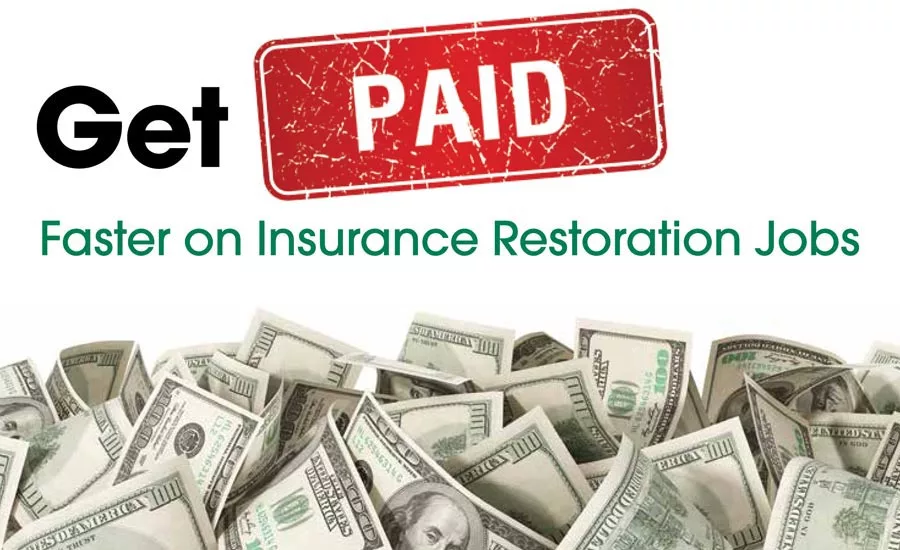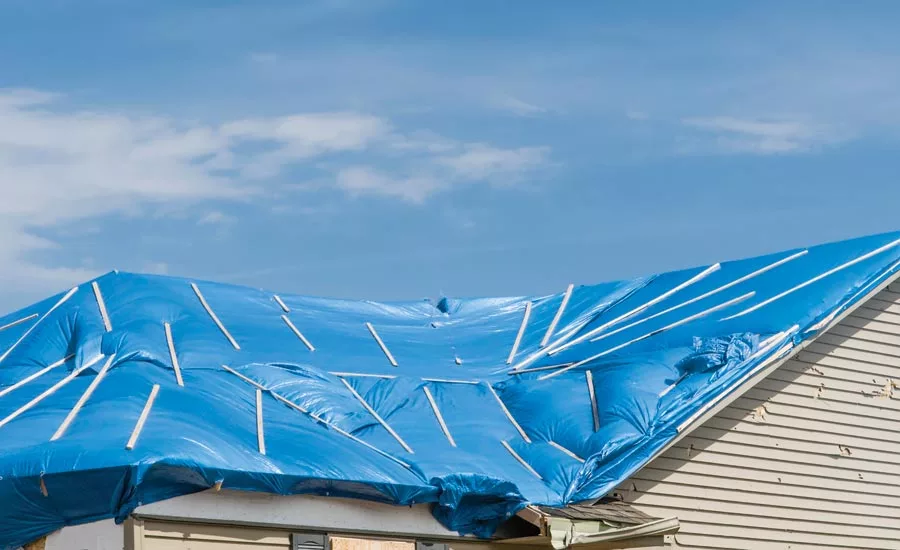Get Paid Faster on Insurance Restoration Jobs



A few years ago, a restoration client of mine asked me what he could do to speed up payment from bank escrow accounts for the insurance claim work he had done. Prior to the call, I had never heard of a problem with getting paid by banks for insurance restoration work. A couple of calls to my friends in the banking business turned up no useful information on how to speed up payments; they were unaware that a problem with paying restoration contractors even existed. I called my client back to report there were no problems. I was wrong.
Thanks to a hail storm that severely damaged the roof and the windows on three sides of my house this year, I now know from first-hand experience why my client was asking the question about delayed payments from banks on a mortgaged home. In this article, I will offer some useful tips to avoid some of the time delays in getting paid for the insurance restoration work you have completed.
The Problem
Both the insurance company and the banker want evidence the work has been completed by a licensed contractor before either one releases the full insurance claim proceeds to the homeowners.
- The insurance company may only provide a partial claim payment until the policy holder provides evidence the work has been completed by a licensed contractor who pays their taxes.
- The lender wants a conditional waiver of lien signed by the contractor before the bank will release the insurance proceeds to the homeowner so that the homeowner can pay the contractor.
- The contractor wants to be paid before giving up their right to put a lien on the property for the work performed.
The bottom line is the system is not designed to function in the sequence it needs to function.
The largest home lenders and homeowner’s insurance companies in the U.S. have created a system of checks and balances designed to protect their interests in the insured home. In doing so, they have created a series of timing impossibilities for the homeowner to work through. These timing impossibilities between the work performed and payment for that work through insurance proceeds can add significant delays in getting you paid.
My assumption is these built-in time delays in the cash disbursement system will come as a surprise to many other homeowners. Sharing insights on how your client can accelerate their payments for a claim will make you appear knowledgeable and extremely helpful. This is an added value to your business that will not go unnoticed.
I must say in my personal hail damage claim experience, the employees of my homeowner’s insurance company and bank were very responsive. The computer systems they used were efficient and I always knew exactly where the hang up was on my claim payment. Because I happen to have an MBA in insurance, all of the terms used in over 30 pages of supporting documents furnished to me by the bank and insurance company were completely understandable. However, even with my background, it took some thinking to figure out the five things I needed to get straightened out before I would see a penny of insurance money. How the average property owner gets through the payment-hold out gauntlet between the insurance company and banker is a mystery to me.
Learning from Example
From my personal experience with a homeowner’s insurance claim, I will provide a suggested course of action for all contractors that are hired and will be paid via the homeowner’s insurance company. The most important thing is to anticipate and understand what the homeowner will face, and how to make their lives easier by anticipating the hang ups.
When I started the arrangements for a new roof and windows the entire thing seemed like it would be quite routine and take only a couple weeks to figure out. To my surprise, the whole process dragged on for weeks, but not for the reason most people would think.
The restoration contractor showed up at my door three days after the hail storm damaged 10,000 homes. A couple days after the contractor figured I needed a new roof and windows, I notified my insurance company to file a claim and got the claims process started. A claims adjuster was assigned and dispatched three weeks later, a full month after the storm. I scheduled the contractor to come out to the house at the same time the adjuster was there to ensure everyone was on the same page when it came to assessing the damage and necessary repairs. The damage assessment process went well and everything seemed to be progressing.
There was some urgency on my part to getting the work done because we have this little thing called winter in Wisconsin and I wanted the roof on before it was 80 below wind chill. I also did not want to be waiting in line to get a roof with 10,000 homes trying to get that work done at the same time. To get things moving, I wrote a check to the contractor for about 25 percent of the projected cost of doing the repairs.
The claims adjuster informed me a check would need to be mailed to me because it was for a larger amount that he could write in the truck that day. The check showed up 10 days later.
The first surprise for me was when my insurance company released a check for only the actual cash value (ACV) of the repair work instead of the full replacement cost (RC). This would be the first hold back of funds. The remaining amount for the RC would not paid by the insurance company until the work was verified as complete. In a way this makes some sense. The insurance company wants confirmation the work is not only complete, but also satisfactory. Nevertheless, it is still frustrating for the homeowner.
In order to obtain the full RC amount, a Certificate of Completion signed by the contractor must be sent to the insurance company. Then the insurance company will disburse the remaining funds, by mailing a two-party check which takes a week to ten days to arrive. This means more time spent by the homeowner to get everything in order, which means more time for you as the contractor to get paid.
At that point, I had personally funded the deductible amount of the 1 percent of the home’s value plus the advance payment to the contractor to get on his project list. Many homeowners are not going to have that much cash sitting around.
Right on schedule, the contractor showed up with a 12-person crew and banged on a new roof in a day. They did a great job. I will be messing around with windows next spring.
Like most Americans, I have a mortgage on my home and my bank is listed as a loss payee on my homeowner’s insurance policy to reflect the bank’s financial interest in the property. Therefore, the bank was included as a payee on the check from the insurance company. This means that the bank, as well as the homeowner, must endorse the checks from the insurance company for the funds to be released.
When I went to my bank to get the insurance proceeds into my checking account, I was informed the bank was going to put the funds into an escrow account and when I had a certificate of job completion, they would release the funds to my checking account. The supporting instructions to me on this part of the process were 15 pages long.
Before the bank would release the funds, (the second hold back of funds) it required a laundry list of completed documents, some of which need to be signed by the homeowner and you as the contractor. The most common things that a homeowner will need to submit to the bank to release funds are:
- Contract(s) for repairs from each contractor
- Copy of Contractor’s License from each contractor
- Conditional Lien Waiver signed by the homeowner and contractor
- Substitute W-9, Request for Tax Payer Identification Number for each contractor being paid
Once the work was done, the insurance company asked for a work-completed form before it would release the difference between the Actual Cash Value check that had been paid and the actual costs to do the work (RC). That difference was about was about 25 percent of the job costs.
Most homeowners do not go through situations like these often, so there is bound to be confusion on the process. This, of course, slows down getting payment from the bank and even starting the repair work if the property owner is not sitting around with a pot of cash. As the contractor, you will want to do everything in your power to get money to start the work as quickly as possible and, of course, get paid in full after completing the work.
My advice is to anticipate this flaw in the insurance proceeds system and have a process in place to make everything go as smoothly as possible. Understand and be ready to explain the process of getting their insurance proceeds to your homeowners. Come prepared with a contract for them to review and sign, a copy of your Contractor’s License, and a blank Conditional Lien Waiver and W-9 form if possible (these should be provided to the homeowner from their bank). Along with those, have a project completion form ready for the homeowner to sign off on the work once it is completed. Lastly, make sure both the insurance company and the bank have your contact information so that they can reach out to you to quickly confirm completion of the work and release final payment.
All in all, this is a rather frustrating arrangement created by the insurance company and mortgage lender. In my case, we are insured by one of the top three home insurers in the country and our mortgage is held by one of the largest lenders nationwide. I’m surprised these two giants together have created such a confusing system that even someone with an MBA in insurance was befuddled at times.
Being knowledgeable in the insurance claims payment processes and helping your clients by making sure they have all the paperwork completed to enable the insurance company to release the full claim amount and for the lender to release the funds from escrow could cut your receivable times by 30 days.
Know the process, and help the homeowner help you.
Looking for a reprint of this article?
From high-res PDFs to custom plaques, order your copy today!






